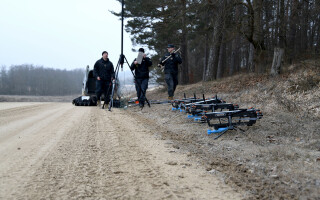Steady defense market for new and aftermarket designs
StorySeptember 03, 2020
Welcome to our 2020 September Resource Guide, which is more than 100 pages for the eighth straight year. Shows you that print is not dead yet – not here – and definitely not in the military-electronics arena. So thank you to our loyal readers and advertisers for continuing to support our flagship publication. Thanks for supporting our print and online channels, but also for your support of and respect toward our warfighters and the sacrifices they make every day.
This year’s edition of our Resource Guide also set a record for advertising sales – nearly 70 pages of ads. Please be sure to check out the categories in this year’s guide and see what the Department of Defense (DoD) is buying, starting on page 50. Many of these offerings are new designs or refreshed versions of other products and play into the open architecture trend in new DoD designs.
This issue size is clearly a sign of healthy defense market due in large part to a steady flow of funding from the DoD, even during the pandemic.
Companies – from commercial off-the-shelf (COTS) suppliers to major prime contractors like Lockheed Martin and Northrop Grumman – are still considered essential businesses and as such have been operating and delivering systems to the DoD.
We expect to see this funding continue somewhat steadily for the next two years, even with the uncertainty of the outcome of the U.S election and as the government moves funding to pay for economic stimulus packages and other COVID-19-related aid. The military market does not have the peaks and valleys that can devastate other markets.
Analysts at Frost & Sullivan see that being the case globally as well. “The decline in GDP and the increase of budget deficits would have an impact on defense spending, but the effect would be lower than other industries,” says Alexander Clark, Aerospace & Defense Research Analyst at Frost & Sullivan. “With increasing geopolitical tensions, the regional defense spending ratio will remain unaffected as the underlying political factors continue to remain constant. Further, the United States, Asia, and Europe, respectively, will remain the biggest consumers of defense products.”
Spending continues to be steady for new technology and new designs as well as decades-old designs that continue to support legacy platforms. With military technology … some things never go away.
In this vein, obsolescence is and always will be a problem, as the deployed platforms often have a service life of five-plus decades, forcing system designers to rely on end-of-life buys and aftermarket suppliers.
“Electronics makers constantly obsolete parts, boards, and entire systems for new technology that provides a performance edge over the competition,” observes Lynette Reese, writing for aftermarket board supplier GDCA in her page 36 article, “True cost: Obsolescence can mean millions.” She cites those on the Obsolescence Management team, housed within the U.S. Army’s Aviation and Missile Research, Development, and Engineering Center, as reporting that “70% of electronics are obsolete before a system is deployed, and one component can become obsolete in a weapon system’s life cycle as many as ten times.”
Given those stats, we can say that the military-electronics aftermarket has a strong future. However, growth cycles typically behave opposite of the rest of the military-electronics market; in other words, when funding for new tech is up, business slows a bit, Dale Lillard, president and owner of IC aftermarket supplier Lansdale Semiconductor tells me in our Q&A on page 32. In some ways that is the case today, but Lillard says the increased spending from U.S. allies on older platforms has increased his business. “There has been an uptick in Foreign Military Sales of weapon system platforms made in the 1980s and 1990s, such as the F-16,” he says.
He goes on: “Approximately 80% of the weapons systems in service from that [the 1980s] are still using some military ICs manufactured during the 1970s and ‘80s,” he tells me. “All those lines are still active – the last one I purchased was in 1993.”
Lillard also touched on counterfeit avoidance in our chat. Marti McCurdy, owner and CEO of Spirit Electronics, goes into detail on the topic in her article titled “Counterfeit components: Risky business.” She writes that “the U.S. Naval Air Systems Command (NAVAIR) Aging Aircraft Program estimates that as many as 15% of all the spare and replacement microchips the Pentagon buys are counterfeit.” Check it out on page 44.
Many things go obsolete in this world – as you will see from this month’s content – but I would say again that print is not one of them, not yet. My 17-year-old nephew, a top student and athlete, told me he just started subscribing to the print edition of the Wall Street Journal. Why? Because he says he likes holding a newspaper and reading a printed book, and doesn’t want to see printed matter go away… I loved hearing that but was embarrassed to then admit I get the WSJ Online. In all forms, folks: Keep reading.






